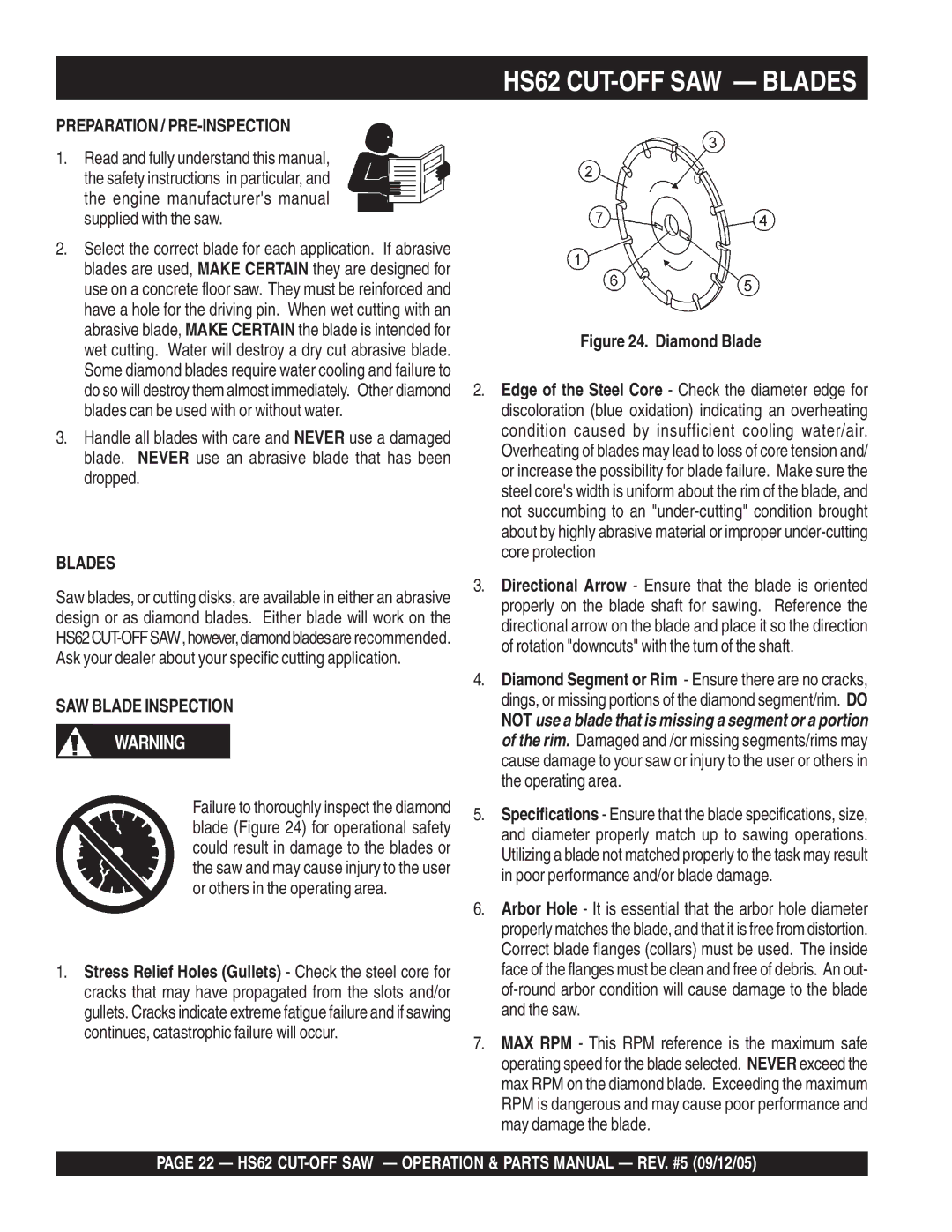HS62 specifications
The Multiquip HS62 is a powerful, high-performance concrete pump designed to deliver exceptional results in various construction applications. Known for its durability and efficiency, the HS62 is particularly valued by contractors for its versatility and reliability on job sites.One of the standout features of the Multiquip HS62 is its robust, heavy-duty construction. Made from high-quality materials, the pump is engineered to withstand the rigors of demanding environments, ensuring longevity and reduced maintenance costs. The frame is designed for stability and ease of transport, making it an ideal choice for both commercial and residential projects.
The HS62 comes equipped with a 62-horsepower engine, providing ample power for demanding pumping tasks. This engine drives a hydraulically-operated system that allows the pump to handle a wide variety of concrete mixes, including high-slump and low-slump materials. With a maximum concrete output of up to 64 cubic yards per hour, the HS62 can efficiently tackle large-scale pouring jobs, reducing the time and labor required.
In addition to its powerful engine, the HS62 features advanced technology that enhances its performance. The intelligent control system allows for precise adjustments to the pumping pressure and flow rate, ensuring optimal performance for different applications. This adaptability leads to a smoother operation and reduced wear on the pump components, which can extend the machine's service life.
Safety is a paramount concern with any construction equipment, and the HS62 incorporates several safety features to protect users and equipment alike. It is equipped with emergency stop buttons and adjustable pressure relief valves, which help prevent accidents during operation. Furthermore, the intuitive design of the control panel allows operators to monitor performance and make real-time adjustments easily.
Another characteristic that sets the Multiquip HS62 apart is its ease of maintenance. The pump's design prioritizes accessibility, allowing for quick inspections and repairs without extensive downtime. This focus on user-friendliness ensures that operators can keep the equipment in top working condition, maximizing productivity on the job site.
Overall, the Multiquip HS62 is a reliable and efficient concrete pump that combines power, advanced technology, and user-friendly design to meet the demands of modern construction projects. Whether it’s for commercial building sites, road work, or large residential pours, the HS62 sets a high standard in the concrete pumping industry, making it a valuable asset for any contractor.

